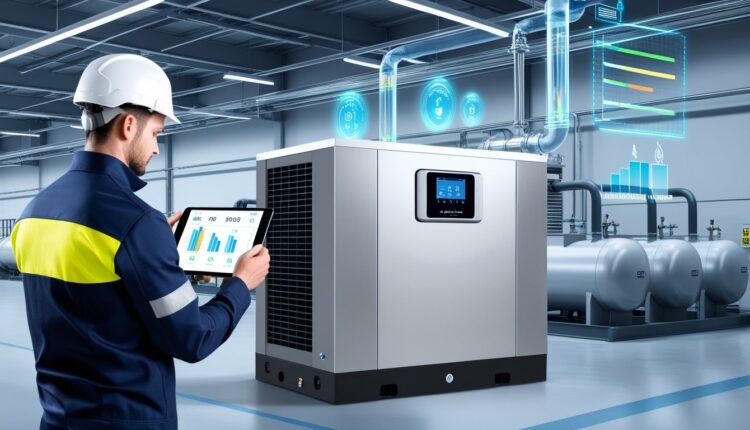The compressed air and industrial engineering sector is quietly powering the backbone of manufacturing, infrastructure, healthcare, food processing, textiles, automotive, and more. As industries modernize, compressed air technology is no longer just about machinery—it is evolving into a space led by digitalisation, sustainability, intelligent energy use, and lifecycle reliability.
This blog provides a snapshot of the industry’s advancements, user ecosystem, market insights, and transformative trends shaping the future of compressed air and industrial solutions.
Industry Overview & Market Landscape
According to Strategic Market Research, the global air compressor market is projected to reach USD 51.59 billion by 2030, driven by industrial automation, smart manufacturing, and demand for energy-efficient systems. Similar estimates by Persistence Market Research place it at USD 48.9 billion by 2030.
As per reports by PS Market Research and NextMSC, India is one of the fastest-growing markets for industrial air compressors, expected to grow at a 5–7% CAGR till 2030, fuelled by manufacturing growth, Make in India initiatives, infrastructure development and rising demand from sectors like food processing, automobiles, pharmaceuticals and electronics.
According to the U.S. Department of Energy, compressed air systems account for nearly 10% of total industrial electricity consumption worldwide, making energy efficiency and lifecycle cost optimisation a key priority for factories.
Industry analyses by the U.S. DOE, IEA and leading engineering reports suggest that companies integrating engineering innovation, energy optimisation, smart controls and IoT-based monitoring are emerging as preferred technology partners in industrial modernisation and smart factory transitions.
The industry’s user base is expanding and evolving:
| User Type | What They Expect |
| Large-scale manufacturers | High uptime, global service support, energy savings, sustainability reporting |
| SMEs & mid-size factories | Reliable yet affordable systems, compact solutions, easy maintenance |
| Process industries (Pharma, Food, FMCG) | Oil-free air, contamination-free production, audit compliance |
| Infrastructure, railways & utilities | Long lifecycle, rugged performance, 24×7 service uptime |
| Emerging sectors (EVs, clean tech, electronics) | Smart, digitally connected compressors with predictive analytics |
Emerging Trends Shaping the Future
Digital Air Management Systems
Compressors are transitioning from mechanical machines to intelligent industrial devices. IoT sensors, AI-driven dashboards, real-time monitoring, and predictive service alerts are enabling factories to track air usage, detect faults early, and reduce downtime.
Energy-Efficient & Smart Air Technologies
Innovations like Demand–Match systems, Variable Speed Drives (VSD), intelligent recirculation of excess air, and waste heat recovery are transforming fixed-speed compressors allowing them to deliver only what is required, when it’s required.
Sustainability & Circular Manufacturing
• Use of renewable energy in manufacturing plants
• Low-carbon materials, recyclable components, zero-waste foundries
• Heat recovery systems that reuse up to 80% of wasted energy for hot water or heating
Backward Integration & Localised Precision Manufacturing
Some companies are manufacturing critical components in-house—motors, pressure vessels, castings—which enhances quality control, reduces imports and builds make-in-India capability.
Skills & Future-Ready Workforce
Vocational training schools, in-house skill centres, and leadership development programs are bridging the talent gap, preparing future-ready engineers capable of handling global operations, automation and digital service models.
In the upcoming issue of Engineering Review, the cover story will explore how one of the companies in the industry is bridging the “hardware & digital service” gap, embracing sustainability, and scaling globally. For readers, it offers actionable insights: how to structure engineering-driven growth, how to reorient talent & culture, how to build resilient business models.
We invite business leaders across the engineering, manufacturing, infrastructure and services spectrum to dive deeper in the magazine upcoming oct edition for the full feature, detailed case-study, and rich take-aways.




